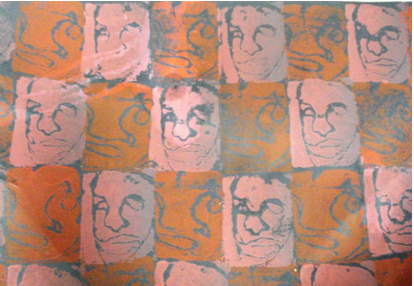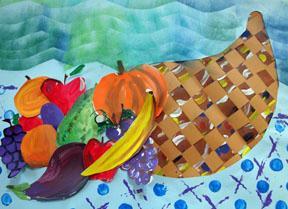Personal Catrouche

Target Group: Grades 9-12
Goal (Terminal Objective): Students will create a bas relief cartouche, in the style of the ancient Egyptians, using personal symbols to signify their names with this lesson from Sargent Art.
Objective: Students will design, sculpt, and paint a cartouche using symbols that represent the individuality of each student.
National Standards:
Visual Arts Grades 9-12 Content Standard1: Understanding and applying media, techniques, and processes
Visual Arts Grades 9-12 Content Standard 2: Using knowledge of structures and functions
Visual Arts Grades 9-12 Content Standard 3: Choosing and evaluating a range of subject matter, symbols, and ideas
Visual Arts Grades 9-12 Content Standard 4: Understanding the visual arts in relation to history and cultures
Visual Arts Grades 9-12 Content Standard 5: Reflecting upon and assessing the characteristics and merits of their work and the work of others
Purpose: Students will understand the symbols used by ancient Egyptian kings and use bas relief sculpture to create a personal cartouche that incorporates symbols.
New Vocabulary: bas relief, cartouche, symbols
Materials:
- Sargent Art Sculpt It! Sargent Art Liquid Metals Sargent Art Sargent Art 10 Pc
- Air-Dry Clay – 10 lbs. Metallic Acrylic Paint Acrylic Paint Asst. Paint Brushes
- #22-2003 #22-1106 Black #22-2485 #56-6010
- Assorted clay tools (plastic knives, craft sticks, cotton swabs)
- Newspapers, water containers, scrap matt board
Time: 2-3 (45-minute periods)
Introduction and Motivation (Set):
Teacher presents images of the cartouches of the ancient Egyptian kings as historical examples of bas relief sculpture. Cartouche is derived from the Egyptian verb meaning “to encircle”. A king’s name was inscribed in hieroglyphs inside an oval.
Teacher shows examples of cartouches found in jewelry, coffins, and artifacts.
Teacher shows symbols that were incorporated into individual cartouche that would represent a King. Each dynasty, or reign of rulers from the same family, had their own symbols.
In bas relief the negative space is carved away leaving the images raised from a flat surface. Color was important in a cartouche -- black symbolized eternity and gold the sun.
Instruction:
Teacher shows examples of cartouches from ancient Egyptian era. Teacher makes sure there are adequate materials and drying space. Teacher has resources available to research individual symbols.
Activities:
(1) Guided Practice:
1. Students will develop ideas for their personal symbols. Zodiac signs, State of birth, favorite team, food, hobbies, culture sign (shamrock) are some that can be incorporated.
2. Students draw thumbnail sketches of their cartouche.
3. Students are given a piece of Sculpt It on a piece of scrap mat board. After it is flattened to a cartouche shape, students draw the chosen design on the clay and use various tools to remove the negative areas. Cotton swabs, dipped in water, can be used to smooth the surface. If the students are to wear their finished product, a hanger must be incorporated at the top.
4. Sculpt It will take about a day to completely dry.
5. When dry, the piece may be sanded before painting. Use Sargent Art acrylics to paint the sculpture. Black, gold, and red were very symbolic to the Egyptians.
6. Hang with a cord or ribbon (optional).
(2) Independent Practice and Check for Understanding: Teacher circulates among the working students visually recording (checklist) students demonstrating understanding of objectives, asking direct questions when understanding isn’t observable, and asking peers to critique each other. Teacher helps and reinforces students as they work.
(3) Closure: Students display their work.
Evaluation: Use teacher or class critiques to evaluate particularly strong works and strong qualities within works.
Level One -- The finished cartouche clearly expresses a strong aesthetic feeling. The cartouche displays a strong and creative use of personal symbols. The craftsmanship is excellent.
Level Two -- The finished cartouche expresses an aesthetic feeling. The cartouche displays use of personal symbols. The craftsmanship is good.
Level Three -- The finished cartouche attempts to show an aesthetic feeling. The cartouche displays some personal symbols. The craftsmanship is variable.
Level Four -- The finished cartouche does not express an aesthetic feeling. The use of personal symbols is unclear or absent. Craftsmanship is poor.
Extension: A cartouche shape could be incorporated into a slab container, with personal symbols on the lid.











